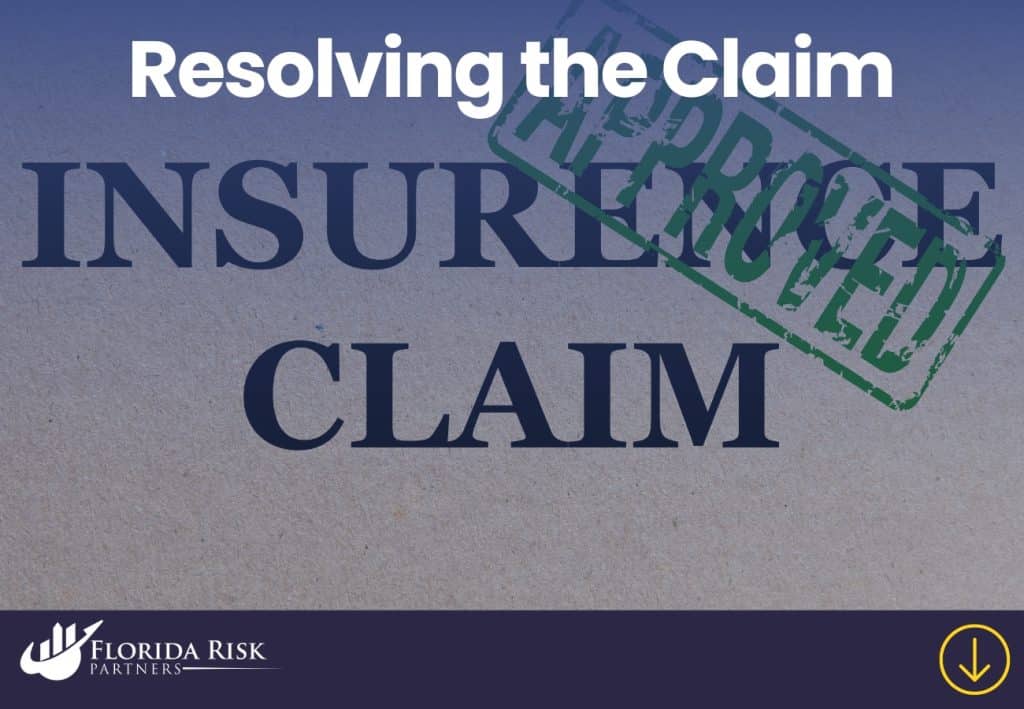-
Main Office: 1434 E. Bloomingdale Ave Valrico, FL 33596-6110
-
Phone: (888) 601-6660
-
Email: info@floridariskpartners.com

When it comes to umbrella insurance, most people focus on the coverage limits and the added protection it provides beyond primary policies like homeowners and auto insurance. But understanding the claims process is equally important, especially when dealing with large liability claims that exceed your standard policy limits. Knowing how to navigate the claims process effectively can make a significant difference in minimizing stress and ensuring that your financial protection is maximized.
This post explains the umbrella insurance claims process, from filing to legal defense coverage. Understanding how it works helps you manage claims effectively and maximize your coverage when needed most.
Understanding the Role of Umbrella Insurance in a Claim
Before diving into the claims process itself, it’s essential to understand the role that umbrella insurance plays in a claim. Umbrella insurance is designed to cover liabilities that exceed the limits of your primary insurance policies, such as your homeowners or auto insurance. This means that, in most cases, your primary policy will be the first to respond to a claim. Only when the primary policy’s limits are exhausted does umbrella insurance kick in to cover the remaining costs.
For example, let’s say you’re involved in a multi-vehicle accident with damages totaling $1 million, but your auto insurance only covers up to $300,000. Once your auto insurance reaches its liability limit, your umbrella insurance will activate to cover the remaining $700,000. Umbrella insurance also provides coverage for certain claims that are often excluded from primary policies, such as defamation or slander.
Step 1: Initiating a Claim with Your Primary Insurance Provider
The umbrella insurance claims process begins with filing a claim under your primary insurance policy. This is because umbrella insurance is considered secondary or excess coverage, meaning it only steps in after your primary insurance reaches its limits. Here’s how the process typically unfolds:
Contact Your Primary Insurance Provider
When an incident occurs that may result in a claim, your first step should be to contact your primary insurance provider, whether that’s your homeowners, auto, or renters insurance company. Inform them of the incident, and provide as many details as possible, including:
- Date and time of the incident
- Location of the incident
- Description of what happened
- Names and contact information of any other parties involved
- Photos or videos of the damage or injuries, if available
Provide Necessary Documentation
Your primary insurance provider will likely request specific documentation, such as medical records, repair estimates, or police reports, depending on the nature of the incident. Promptly providing this information can help speed up the claims process and determine the amount of coverage provided by your primary insurance.
Allow the Primary Provider to Investigate the Claim
Your primary insurer will investigate the claim, assess liability, and determine the total payout. This process varies based on the complexity of the claim, but it’s essential to cooperate fully with your primary insurer to ensure the claim is handled efficiently.
Step 2: Activating Your Umbrella Insurance Coverage
Once your primary insurance policy reaches its coverage limit, it’s time for your umbrella insurance to kick in. Your primary insurer will inform you when the policy’s liability limit has been exhausted and will notify your umbrella insurance provider to begin the secondary claims process.
Notify Your Umbrella Insurance Provider

Contact your umbrella insurance provider as soon as your primary policy’s limits are reached. Be prepared to share:
- Claim details and reference number from your primary insurance claim
- Documentation related to the incident, including any reports, photos, or bills
- Proof of primary policy exhaustion, usually provided by your primary insurer
The faster you can provide this information to your umbrella insurer, the quicker they can begin processing the claim.
Review Coverage Details
Each umbrella policy has unique terms, so review your policy’s specific coverage details with your provider to understand what to expect in terms of reimbursement, deductibles (if any), and legal defense coverage. Ensure you understand the limit of your umbrella policy and any exclusions that may apply to the claim.
Step 3: Working with a Claims Adjuster
Once you’ve initiated the claim with your umbrella insurance provider, a claims adjuster will typically be assigned to your case. The adjuster’s role is to evaluate the claim and determine how much the umbrella policy will pay based on its coverage limits and terms.
What to Expect from the Claims Adjuster
The adjuster will review all documentation, including details from the primary insurance claim, police reports, and any other relevant information. In some cases, they may request additional documentation or meet with you in person to assess the claim. Be prepared to answer any questions they may have about the incident, and provide any necessary additional information.
The adjuster will then determine the amount your umbrella policy will cover, up to the policy’s limit. This may include costs for medical bills, property damage, legal fees, and any other applicable expenses that exceed your primary policy’s limits.
Step 4: Understanding Legal Defense Coverage
One of the most valuable aspects of umbrella insurance is its legal defense coverage. In many cases, umbrella insurance covers the legal fees associated with defending a claim, even if the claim is ultimately deemed without merit. Legal defense costs can be substantial, especially in high-stakes liability cases, so having this coverage can be a significant financial relief.
Does Legal Defense Reduce Your Coverage Limit?
One important detail to clarify with your umbrella insurance provider is whether legal defense costs are included in or separate from your coverage limit. Some policies cover legal fees without reducing your policy’s coverage limit, while others may deduct legal expenses from the total coverage amount.
For example, if you have a $1 million umbrella policy and legal defense is included within the coverage limit, any legal fees would be deducted from the $1 million limit. However, if legal defense is covered outside the policy’s limit, it provides even more comprehensive protection.
Choosing Your Legal Representation
Some umbrella insurance policies allow you to select your own legal representation, while others may assign an attorney. If you have a preference for working with a specific attorney or law firm, discuss this with your provider to understand your options.
Regardless of who provides legal representation, umbrella insurance typically covers legal fees, court costs, and settlements up to the policy’s limit, providing a strong defense for liability claims.
Step 5: Resolving the Claim

After the claims adjuster’s assessment and legal arrangements, the claim moves toward resolution. The focus is on settling with the other party or addressing legal judgments under the umbrella policy terms.
Settling the Claim
In most cases, your umbrella insurance provider will work with you to negotiate a settlement with the claimant. The settlement process varies depending on the complexity of the case, but having legal representation covered by your umbrella policy ensures you’re protected financially.
Once a settlement is reached, your insurance provider will cover the agreed-upon costs up to the policy’s limit. Any additional expenses beyond the policy limit would need to be covered out-of-pocket, so choosing a coverage limit that meets your needs is essential.
Paying Out Claims and Finalizing Documentation
If the claim results in a settlement or court-awarded judgment, your umbrella insurer will handle the payment process directly with the claimant or their attorney. Once the payment is issued, you’ll receive a final claim summary and documentation from your insurer, closing out the claim.
Tips for Navigating the Umbrella Insurance Claims Process Smoothly
The umbrella insurance claims process can seem complex, especially when large claims or lawsuits are involved. Here are some tips to help you navigate the process more effectively:
1. Document Everything Thoroughly
Keep detailed records of the incident, including photos, videos, and notes from conversations with other parties. Save copies of any police or medical reports, and organize all documentation to streamline the claims process.
2. Communicate Promptly with Both Insurers
Since umbrella insurance is secondary coverage, clear communication with both your primary and umbrella insurance providers is essential. Respond promptly to requests from claims adjusters and keep your insurers updated on any new developments.
3. Understand the Terms of Your Policy in Advance
Familiarize yourself with your umbrella insurance policy’s terms, including coverage limits, exclusions, and legal defense provisions. Knowing what to expect in advance helps you avoid surprises during the claims process and ensures you have the right coverage for your needs.
4. Be Transparent with Your Claims Adjuster
The claims adjuster is there to assess your claim and determine the appropriate coverage based on your policy’s terms. Be transparent and cooperative, providing any information they request to facilitate the process.
5. Seek Clarity on Legal Representation
If you have questions about your legal representation options or how legal defense costs impact your coverage limit, don’t hesitate to ask your insurer. Understanding these details gives you confidence in the legal protection your umbrella policy provides.
Final Thoughts: Preparing for the Unexpected with Umbrella Insurance
Navigating the umbrella insurance claims process can be challenging, especially in high-stakes situations involving large claims. By understanding each step of the process, from initiating the claim to working with adjusters and legal teams, you’re better prepared to handle a claim smoothly and make the most of your coverage.
Learn how umbrella insurance protects you and your family—download our comprehensive e-book today. This guide covers choosing the right policy, managing claims, and securing your financial future.
Get a FREE copy of our comprehensive guide to personal umbrella insurance
In today’s unpredictable world, umbrella insurance provides peace of mind and financial security, ensuring you’re prepared for life’s unexpected challenges. With the right knowledge and preparation, you can navigate the claims process confidently and protect what matters most.
Call Us Or
Schedule an Appointment
Select an agent below to view our online calendars and select a day and time that works best for you or call us directly at 888-601-6660. When you use our online calendars, you will receive an email with more information.



